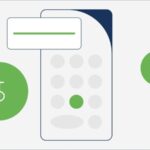Performance Max campaigns gain New Customer Acquisition goals
Google’s most automated campaign type, Performance Max, is getting a new optimization feature aimed at driving new business. The addition comes in the form of a new customer acquisition goal that will allow advertisers to optimize to those who are not previous customers. Additional changes have also been announced to help advertisers identify high-level insights and make the transition to Performance Max easier.
Announced back in 2020, Google’s Performance Max campaigns (nicknamed PMax) have seen intense scrutiny over the lack of control that advertisers have. These campaigns do not contain traditional keywords, audiences, placements or other guardrails for targeting. Instead advertisers input asset groups, location/time of day targeting and audience signals to attempt to drive a qualified click. This new customer acquisition goal is another lever that advertisers can pull to try and drive quality traffic with these campaigns where options and data are at a premium.
New customer acquisition goals. The largest change to PMax campaigns is the ability to use your data to help Google identify (and serve to) new customers. Advertisers have a few options to choose from when identifying new customers including:
- Customer Match lists. These lists use first party data including email, phone, first name, last name, country and zip code. When uploaded Google will provide a match rate that shows how many of your customers have a matching Google account that can be used in targeting.
Note: While this PII information is currently being used by Google this is to be used for first-party data only. Once support for third-party cookies are phased out, Customer Match will no longer be supported in third party contexts but Google will continue to allow Customer Match in first-party contexts, when a publisher has a direct relationship with a customer.
- Conversion tags. Pixels are still alive and well in Google Ads and the use of conversion tags for purchases can help these new PMax goals exclude folks that are not new.
- Google’s autodetection method. This autodetection method is similar to what was used in Smart Shopping campaigns called “Google detected” but also adds some new flair. According to a Google spokesperson, the new autodetection in Performance Max includes the Google detected purchase conversion tracking previously seen in Smart Shopping, plus they “have also built new machine learning modeling to predict how likely a user is to be a new vs. existing customer for an advertiser to make up for low match rates”.
What does this mean? Google can take 1st party signals, Google Ads conversion data and their internal auto-detection to try to figure out who is not a previous customer and target them. This does not guarantee that you won’t be doing remarketing (you likely will), instead Google will just work to find users that are not customers.
Note: This will leverage the above signals but will not weed out searchers that are looking for your brand using branded terms. In order to block those searches, an advertiser will need to find a Google account rep that can manually insert negative terms into campaigns. A change may be coming soon as according as a Google Spokesperson confirmed they “are working on a tool for controlling negative keywords at the account level for brand safety purposes”.
Similar to other Performance Max campaigns, Google still recommends “waiting 4-6 weeks after activating a Performance Max campaign to evaluate results”. So it is still imperative to give these new customer acquisition campaigns the time and patience required to succeed.
Additional new Performance Max insights. Those advertisers that are looking for more intelligence on campaign performance will be pleased as Google is giving us a little more information. There will be two new additions to the insights page within a PMax campaign:
- Asset Audience insights
These insights will help advertisers see how text, images and video assets “resonate with specific customer segments”. There is no additional information on the format of how these insights will look, but it would be safe to expect it to resemble other automated reporting such as RSA insights. Of course even with data on which assets resonate there is no way to target a specific customer segment using PMax, advertisers can only deploy audience signals. - Diagnostic insights
Advertisers will be able to use this to surface the setup issues that may be hindering performance. These insights will show advertisers why ads are not showing as well as suggestions on how to fix. Given the lack of information and data provided by Performance Max campaigns, the addition of diagnostic insights is welcomed warmly.
One-click upgrade tool is rolling out. Smart Shopping and Local campaigns are being sunset and replaced by Performance Max. Google announced that the much awaited one-click upgrade into Performance Max will begin rolling out “over the coming weeks”.
When this tool is available in an account a notification will show to advertisers. This can additionally be found in the recommendations page and the campaigns page. When an upgrade has happened with this tool, a new Performance Max campaign will be generated that keeps the learnings from previous campaigns. According to Google, these learnings brought over to the new PMax campaign will “maintain consistent performance”.
Why we care. Love it or hate it, Performance Max is here to stay. The ability to target new users may help cut down on errant spend, and let advertisers find a more scalable audience. While this won’t remove previous site visitors or those searching for your brand, it should be more efficient for new customer acquisition than standard PMax campaigns. The additional insights may help troubleshoot setup issues and may help guide advertisers on what creative is resonating with specific customer segments, albeit there is not a way to target that audience within a campaign. Lastly, the new one-click migration should be a big upgrade over a manual rebuild as the learnings will be brought over into the new PMax campaign.
The post Performance Max campaigns gain New Customer Acquisition goals appeared first on Search Engine Land.



